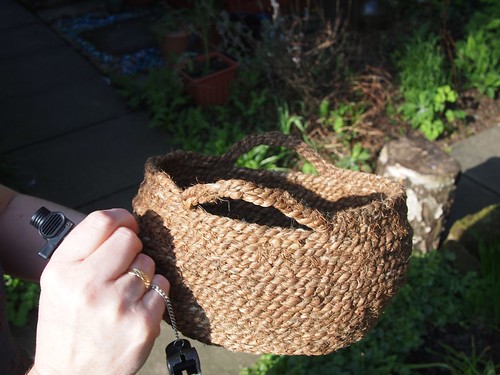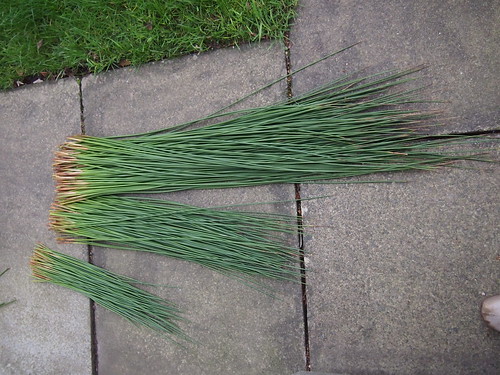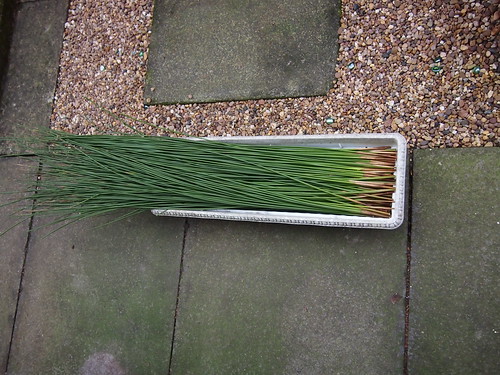I met a Dutch lady years ago who said that on her farm they just left the nettles standing and the weather rotted them down enough that by Springtime they could just be pulled out and finish retted for fibre.
I reckon they must be awfully dry on her farm, because I don't think I've ever managed to get long nettles in any decent state past Winter, and the blooming things are usually sprouting again from the roots by then too. I have tried leaving them, but they just go down with mildew here.
I sympathise on the nettle reaction. My skin flares up with almost anything nowadays. A rose scratch leaves a wet weeping itchy weal now :/ and nettle stings hurt for days, even if I try the really hot hot water on them trick.
This set of rushes I'm going to have a go at a corded bowl.
Years ago I was asked to look at a bit of Neolithic pottery because there were marks on the base and the fellow who'd excavated it wondered if I knew what they were. It was a little bowl with a base of about 10cms, and was found in the Western Isles. The imprint marks on the base, to me, were as clear as day, that it had rested while damp, might even have been supported on as it was made and dried, on a grass mat. Three stitches around each coil space and then three around the next one out, round and round and round. I made a copy just using grass I pulled from the park area just across from the Archaeology building because he didn't believe me that it was such a simple everyday thing to make, to use, to dispose of, and that would rot and disappear from all record, except for the impression that it left on the fired clay.
I kept meaning to make a bowl from the design, and I think these chance, unexpectedly available, rushes might do very well

We'll see, but for the meantime they're tidied up and drying in the cold greenhouse. If we get a dry bright day then I might lay them out on the slabs to speed the drying along a bit.
M





